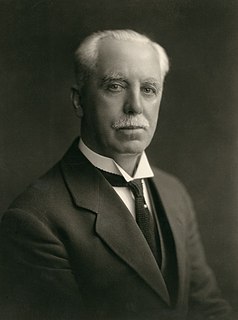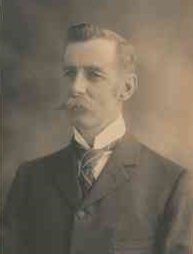Related Research Articles

Crawford Vaughan was an Australian politician, and the Premier of South Australia from 1915 to 1917. He was a member of the South Australian House of Assembly from 1905 to 1918, representing Torrens (1905–1915) and Sturt (1915–1918). Elected for the United Labor Party, he served as Treasurer in the Verran government, succeeded Verran as Labor leader in 1913, and was elected Premier after the Labor victory at the 1915 state election.

Sir David John Gordon was an Australian politician. He was a member of the Australian House of Representatives from 1911 to 1913, before going into state politics and becoming a member of the South Australian Legislative Council from 1913 to 1944. He was briefly Minister of Education and Minister of Repatriation under SA Premier Archibald Peake in 1917.

Archibald Henry Peake was an Australian politician. He was Premier of South Australia on three occasions: from 1909 to 1910 for the Liberal and Democratic Union, and from 1912 to 1915 and 1917 to 1920 for its successor, the Liberal Union. He had also been Treasurer and Attorney-General in the Price-Peake coalition government from 1905 to 1909.

John Verran was an Australian politician and trade unionist. He served as premier of South Australia from 1910 to 1912, the second member of the Australian Labor Party (ALP) to hold the position.

Sir Richard Butler was an Australian politician. He was a member of the South Australian House of Assembly from 1890 to 1924, representing Yatala (1890–1902) and Barossa (1902–1924). He served as Premier of South Australia from March to July 1905 and Leader of the Opposition from 1905 to 1909. Butler would also variously serve as Speaker of the House of Assembly (1921–1924), and as a minister under Premiers Charles Kingston, John Jenkins and Archibald Peake. His son, Richard Layton Butler, went on to serve as Premier from 1927 to 1930 and 1933 to 1938.
The Liberal Federation was a South Australian political party from 16 October 1923 to 1932. It came into existence as a merger between the rival Liberal Union and National Party, to oppose Labor.
The Liberal and Democratic Union (LDU) was a South Australian political party formed by early liberals, as opposed to the conservatives. It was formed in 1906 when liberal party structures were becoming more solid. Its leader, Archibald Peake, stressed that the LDU represented 'something not so sharply set as Labourism, not so dull in its edge as conservatism'. But with Labor taking over the middle ground, Kingstonian liberals like Peake had to choose.

State elections were held in South Australia on 27 May 1905. All 42 seats in the South Australian House of Assembly were up for election. The incumbent conservative government led by Premier of South Australia Richard Butler in an informal coalition with the liberals was defeated by the United Labor Party (ULP) led by Leader of the Opposition Thomas Price. Each of the 13 districts elected multiple members, with voters casting multiple votes.

State elections were held in South Australia on 3 November 1906, apart from the Northern Territory, which voted on 10 November. This was a double dissolution election, and in the South Australian House of Assembly, all 42 seats were up for election. The incumbent United Labor Party (ULP) government led by Premier of South Australia Thomas Price with coalition partner the Liberal and Democratic Union (LDU) led by Archibald Peake, defeated the conservative opposition led by Leader of the Opposition Richard Butler. Each of the 13 districts elected multiple members, with voters casting multiple votes.

State elections were held in South Australia on 2 April 1910. All 42 seats in the South Australian House of Assembly were up for election. The incumbent Liberal and Democratic Union (LDU) government led by Premier of South Australia Archibald Peake was defeated by the United Labor Party (ULP) led by John Verran. Each of the 13 districts elected multiple members, with voters casting multiple votes. The Peake LDU minority government had replaced the Price ULP/LDU coalition government in June 1909. The 1910 election was the first to result in a South Australian majority government. This came two weeks after the election of a first majority in either house in the Parliament of Australia at the 1910 federal election, also for Labor. Though a South Australian majority was won, the ULP did not take office until after the new lower house first met.

State elections were held in South Australia on 10 February 1912. All 40 seats in the South Australian House of Assembly were up for election. The incumbent United Labor Party government led by Premier of South Australia John Verran was defeated by the opposition Liberal Union led by Leader of the Opposition Archibald Peake. Each of the 13 districts elected multiple members, with voters casting multiple votes.

State elections were held in South Australia on 27 March 1915. All 46 seats in the South Australian House of Assembly were up for election. The incumbent Liberal Union government led by Premier of South Australia Archibald Peake was defeated by the opposition United Labor Party led by Leader of the Opposition Crawford Vaughan. Each district elected multiple members, with voters casting multiple votes.

State elections were held in South Australia on 6 April 1918. All 46 seats in the South Australian House of Assembly were up for election. The incumbent Liberal Union government led by Premier of South Australia Archibald Peake defeated the opposition Australian Labor Party led by Leader of the Opposition Andrew Kirkpatrick. Each district elected multiple members, with voters casting multiple votes.

The Price-Peake Government is the name given to the coalition government in South Australia between 1905 and 1909 when Labor leader Tom Price led the government as Premier of South Australia with the support of the Liberal and Democratic Union (LDU) leader Archibald Peake as Treasurer of South Australia and Attorney-General of South Australia. Despite neither leader having Ministerial experience, the government they led was popular and successful.
This is a list of members of the South Australian Legislative Council from 1910 to 1912
The National Party was a political party active in South Australia from 1917 to 1923. As with the federal National Labor Party, it was created in the wake of the Australian Labor Party split over conscription, resulting in the February 1917 expulsion from the South Australian Labor Party of the Premier, Crawford Vaughan, and his supporters. It was initially known as the National Labor Party like its federal counterpart, but was renamed at a conference in June 1917. The party initially continued in government under Vaughan, but was subsequently defeated in parliament in July 1917, and thereafter served as the junior partner in a coalition with the Liberal Union under Archibald Peake.
The Farmers and Producers Political Union (FPPU) was an independent conservative agrarian political party founded in South Australia in reaction to Labor, keen to fend off a perceived threat to the FPPU's interests against a rising labour movement and Labor. The rural stockowners and graziers were concerned at the concentration of the Australasian National League (ANL) on the metropolitan electorates and urban issues, leading to the formation of the FPPU which had a conservative political agenda, and was absolutely opposed to franchise reform. It was essentially the rural wing of the ANL. The FPPU was created in 1904 and lasted until after the 1910 election when it merged with the Liberal and Democratic Union and the National Defence League to become the Liberal Union.

Harry Jackson was an Australian politician who represented the South Australian House of Assembly seats of Stanley from 1906 to 1915 and Port Pirie from 1915 to 1918. He represented the United Labor Party until the 1917 Labor split, when he was expelled and joined the splinter National Party. He served as Speaker of the South Australian House of Assembly from 1911 to 1912.
This is a list of members of the South Australian House of Assembly from 1915 to 1918, as elected at the 1915 state election:
Richard Alfred O'Connor was an Australian politician. He was a Liberal Union member of the South Australian House of Assembly from 1915 to 1921, representing the multi-member seat of Albert.
References
- ↑ "The Political Position". The Register . Adelaide: National Library of Australia. 29 August 1923. p. 9. Retrieved 29 September 2014.
- ↑ "Federal political crisis". Hobart Mercury. 5 January 1923.
- ↑ "TELEGRAMS". The Border Watch . Mount Gambier, SA: National Library of Australia. 16 October 1923. p. 3. Retrieved 17 January 2015.